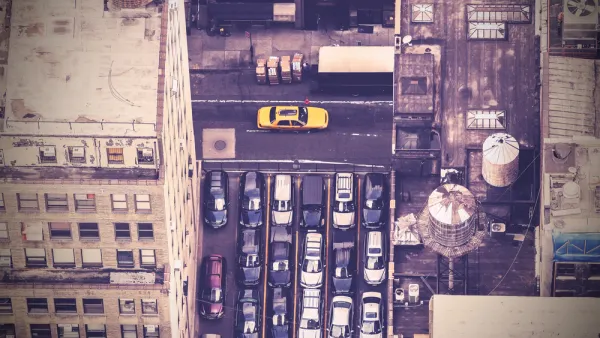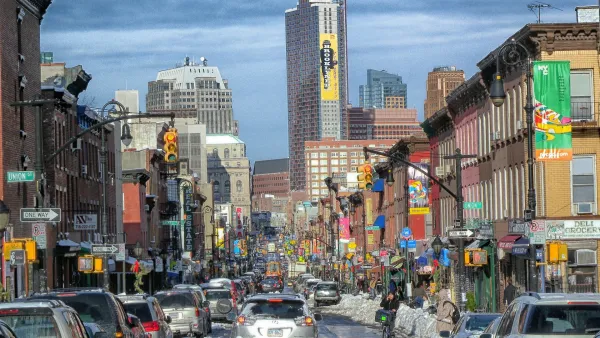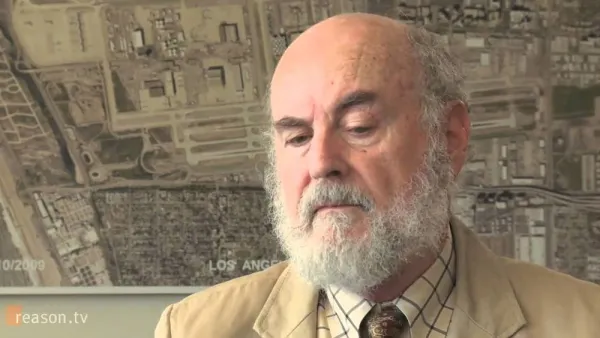In yet another illustration of the high cost of free parking, Eric Jaffe reports on a study by two Virginia Tech transportation scholars that analyze all types of commuter transportation benefits and how they influence choice of commute mode.
Want your workers to drive alone to work? Offer them free parking; nothing groundbreaking there. This study [PDF] by Virginia Tech transport scholars Andrea Hamre and Ralph Buehler goes much further, of course, and yields surprising results, clearly illustrated in three charts that CityLab's Eric Jaffe constructs.
An employer trying to please all his/her workers should offer commuter benefits to all, from free parking to free transit passes to bike lockers and showers, right?
"Thing is, commuter benefits for everyone can end up being a loss for the city itself. That's because the lure of free office parking is so great that it not only neutralizes the other benefits, it actually entices some commuters into their cars and out of the alternative mode they might otherwise prefer," writes Jaffe.
At baseline, when employers offer no commuter benefits at all, the probability of driving alone to work is nearly 76 percent, with taking transit at 22 percent (see chart, orange dots). As expected, when a company offers only free parking and no other benefit, the probability of solo-driving nearly hits the roof, reaching 97 percent (blue). Similarly, when a company offers only transit benefits and nothing else, probability of taking the bus or train breaks 76 percent, and driving becomes less appealing (light blue).
Jaffe continues. "So far, no surprises." Actually, that was a surprise for me - transit at 76 percent! Then again, these observations made "in the city core and the inner suburbs" of the D.C. region. "But take a look what happens when a company gives employees both free parking and transit perks:"
(W)e find the probability of driving alone to work in this scenario increased relative to nothing—reaching roughly 83 percent, compared to 16 percent for transit (below, dark blue).
I.e., transit usage dropped 6 percent while drive alone increased 7 percent over the "no benefit" scenario, meaning that no benefits for all is preferable to benefits for all when it comes to increasing alternatives to driving alone.
Jaffe's conclusion: "In the end, what the data give us is yet another example of how incentives to ride transit aren't enough to shift commuter preferences on their own. If cities want real change, they need to create disincentives to drive or park, too."
FULL STORY: It's Amazing How Many More Commuters Would Drive Less if They Didn't Get Free Parking

Analysis: Cybertruck Fatality Rate Far Exceeds That of Ford Pinto
The Tesla Cybertruck was recalled seven times last year.

National Parks Layoffs Will Cause Communities to Lose Billions
Thousands of essential park workers were laid off this week, just before the busy spring break season.

Retro-silient?: America’s First “Eco-burb,” The Woodlands Turns 50
A master-planned community north of Houston offers lessons on green infrastructure and resilient design, but falls short of its founder’s lofty affordability and walkability goals.

Test News Post 1
This is a summary

Analysis: Cybertruck Fatality Rate Far Exceeds That of Ford Pinto
The Tesla Cybertruck was recalled seven times last year.

Test News Headline 46
Test for the image on the front page.
Urban Design for Planners 1: Software Tools
This six-course series explores essential urban design concepts using open source software and equips planners with the tools they need to participate fully in the urban design process.
Planning for Universal Design
Learn the tools for implementing Universal Design in planning regulations.
EMC Planning Group, Inc.
Planetizen
Planetizen
Mpact (formerly Rail~Volution)
Great Falls Development Authority, Inc.
HUDs Office of Policy Development and Research
NYU Wagner Graduate School of Public Service




























